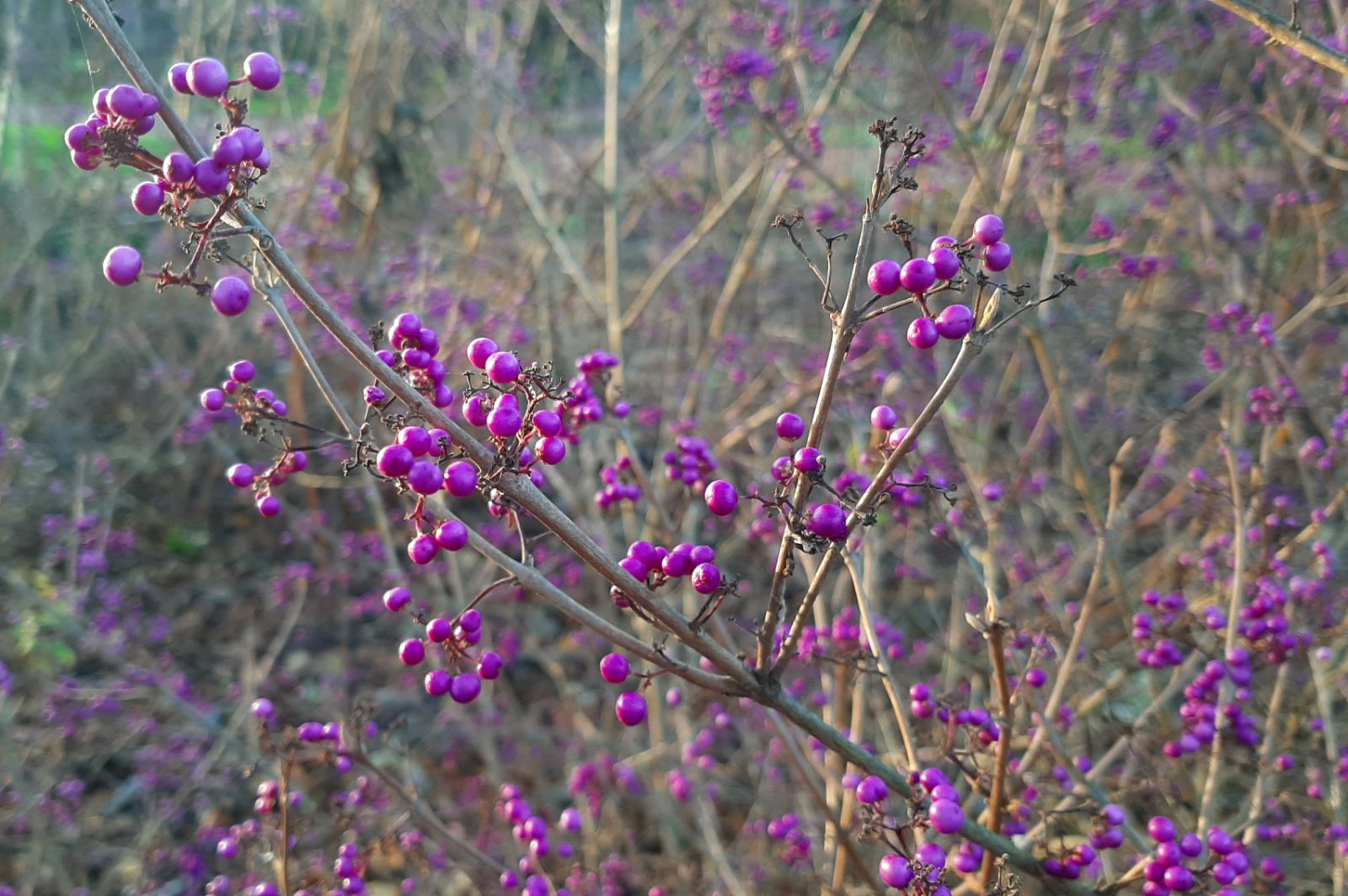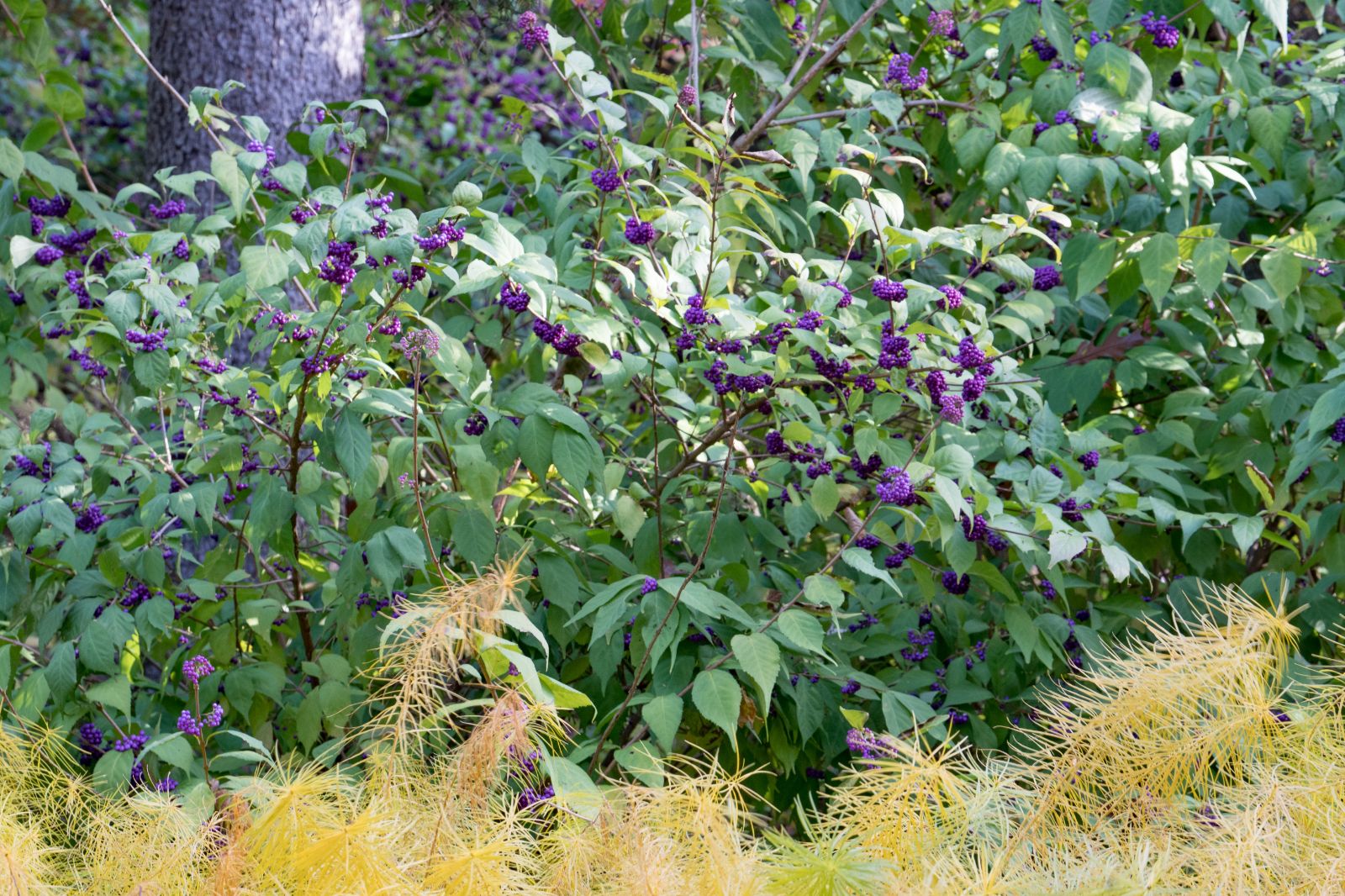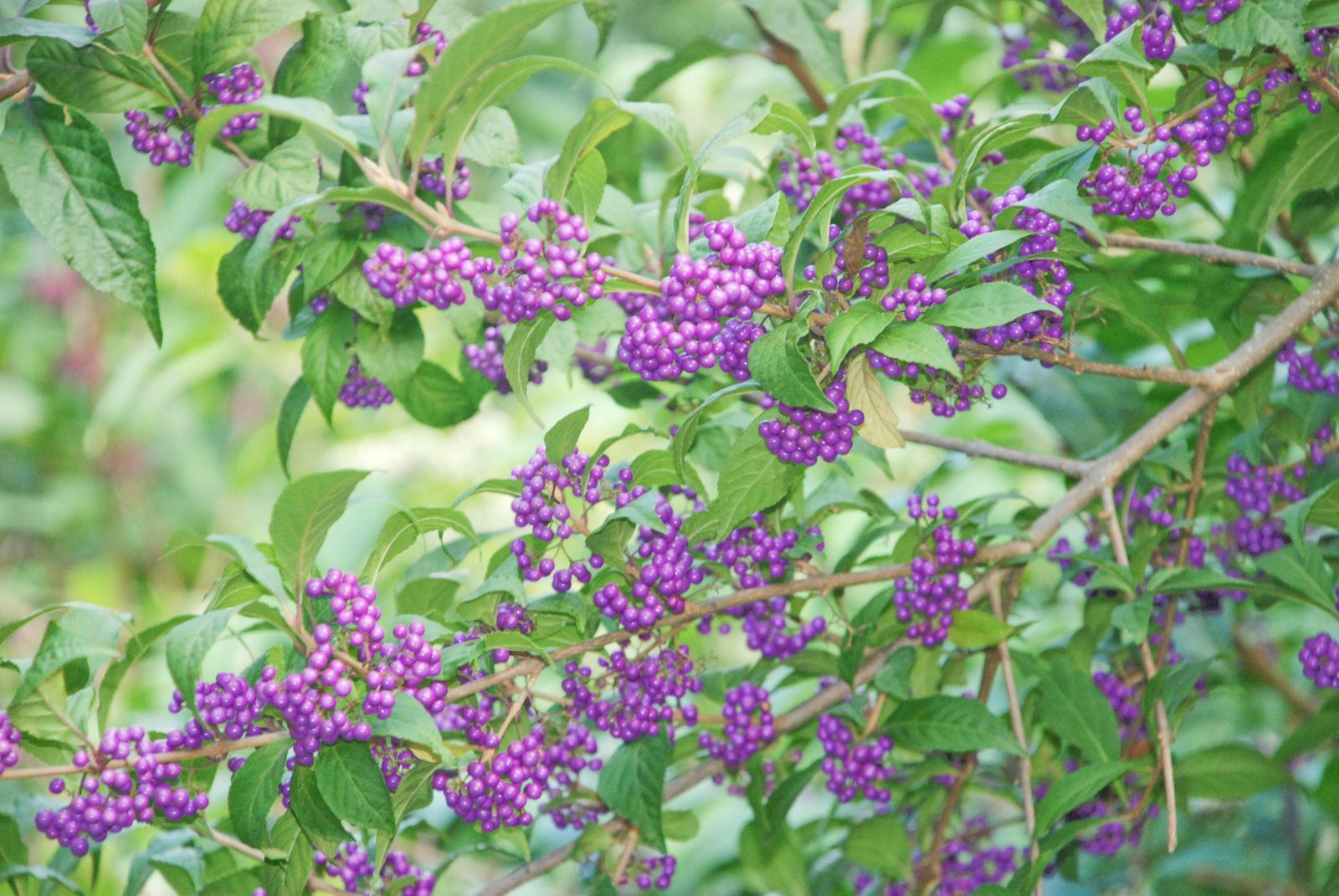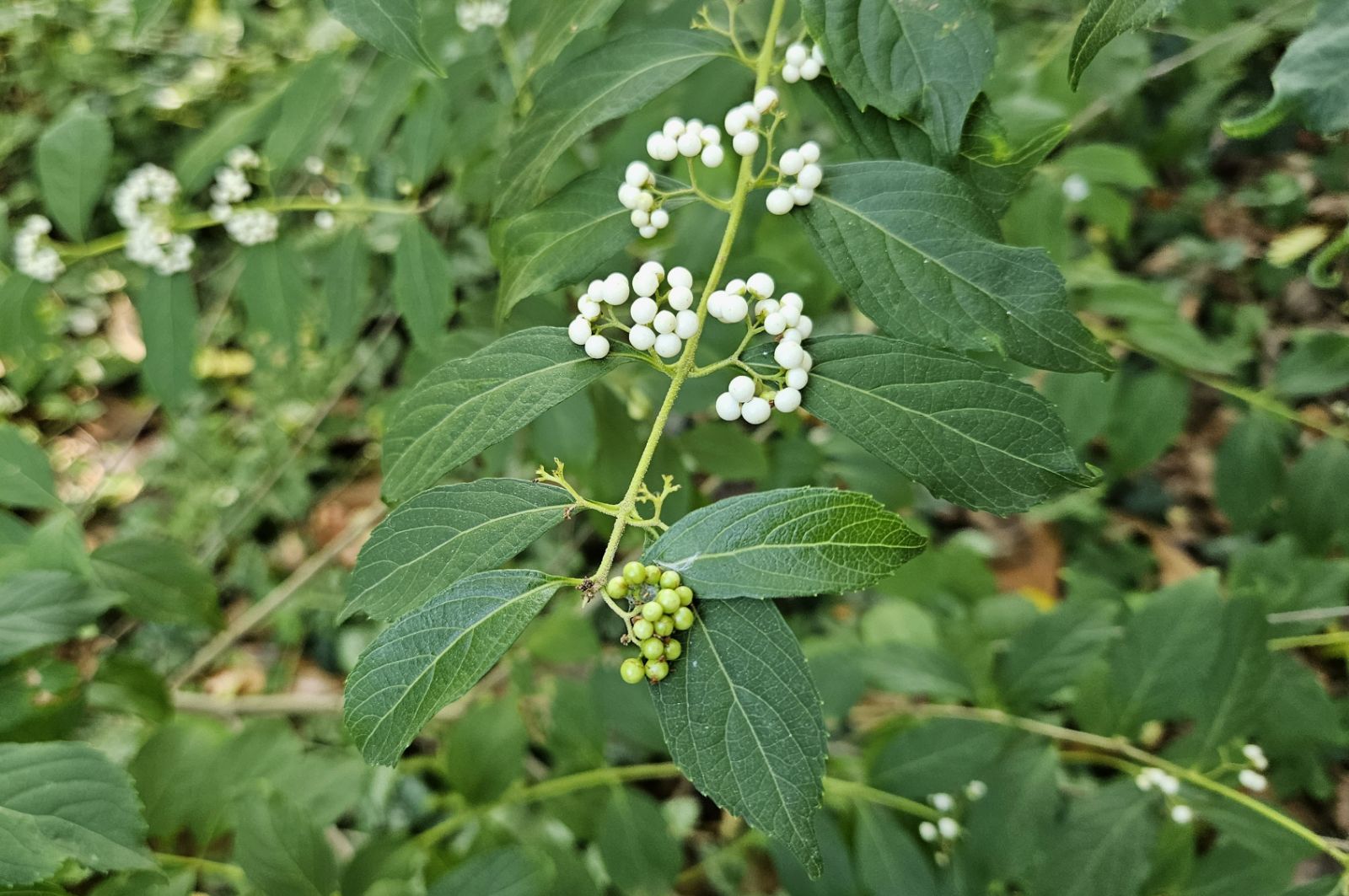Callicarpa japonica
Credits
Article from Bean's Trees and Shrubs Hardy in the British Isles
Recommended citation
'Callicarpa japonica' from the website Trees and Shrubs Online (treesandshrubsonline.
Genus
A deciduous shrub 3 to 5 ft high, with erect, semi-woody stems furnished at first with a pale tufted felt, which soon falls away. Leaves narrowly oval or ovate-lanceolate; 3 to 5 in. long, 11⁄2 to 2 in. wide; tapering at both ends, often long and slender-pointed, the central part only toothed; almost or quite glabrous, with numerous yellowish glands beneath; stalk 1⁄6 to 1⁄3 in. long. Flowers pale pink, crowded in axillary cymes which are 1 to 11⁄2 in. across, and expand in August. Fruit globular, about the size of peppercorns, violet.
Native of Japan. Although this plant lives in the open ground at Kew, and is only killed in very severe winters, it really needs some sheltered, sunny corner, such as the angle of a house facing south-west, to be seen at its best. As it flowers and fruits on the shoots of the year, a mere cutting back by frost does not matter; some such pruning is necessary. A loamy soil, not enriched, is best for it.
From the Supplement (Vol. V)
C. americana – Ranging as far north as Virginia and as far west as Texas, this species may prove to be reasonably hardy in some forms. There have been at least three reintroductions in recent years, two to Kew in 1978–9 and one by James Russell to the Castle Howard collection in 1980. The latter also includes C. americana var. lactea F. J. Muller, in which the fruits are white.
C americana L.
Common Names
French Mulberry
A shrub 3 to 6 ft high, with the flowers and fruits arranged as in C. japonica, the flowers bluish, the fruit violet, but very distinct in leaf and stem, both of which have more persistent down than in the Japanese species; the leaf, too, is much larger and broader, and 1{1/2} to 4 in. in diameter. This species is native of the south-eastern and south-central United States, and is too tender for any but the mildest parts of the country.
var. angustata Rehd.
Synonyms
C. longifolia Hemsl., not Lam
A taller plant with lanceolate leaves, narrower than in the type ({2/5} to 1{1/5} in. wide). Native of China. Closely allied to this species is C. dichotoma (Lour.) K. Koch, a native of China and Japan, introduced by Fortune about 1857. It is not so hardy, and may be used as a greenhouse plant. It is not so vigorous a grower as C. japonica, but is of the same half-woody nature; it has thinner stems, and smaller leaves and berries, the latter deep lilac in colour, and about {1/8} in. across. Another species sometimes seen in gardens is:




